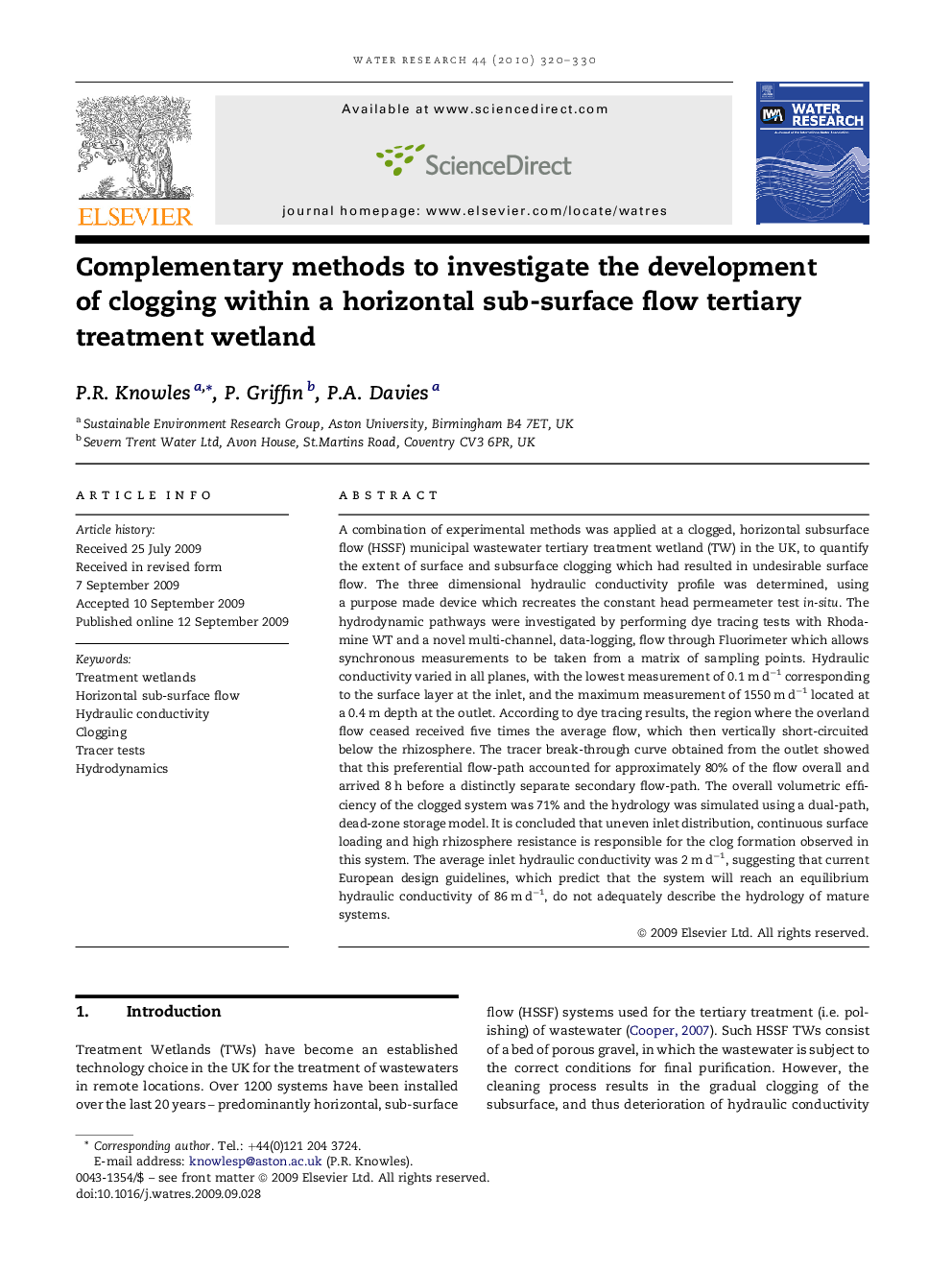| کد مقاله | کد نشریه | سال انتشار | مقاله انگلیسی | نسخه تمام متن |
|---|---|---|---|---|
| 6368227 | 1316945 | 2010 | 11 صفحه PDF | دانلود رایگان |
عنوان انگلیسی مقاله ISI
Complementary methods to investigate the development of clogging within a horizontal sub-surface flow tertiary treatment wetland
دانلود مقاله + سفارش ترجمه
دانلود مقاله ISI انگلیسی
رایگان برای ایرانیان
کلمات کلیدی
موضوعات مرتبط
مهندسی و علوم پایه
علوم زمین و سیارات
فرآیندهای سطح زمین
پیش نمایش صفحه اول مقاله

چکیده انگلیسی
A combination of experimental methods was applied at a clogged, horizontal subsurface flow (HSSF) municipal wastewater tertiary treatment wetland (TW) in the UK, to quantify the extent of surface and subsurface clogging which had resulted in undesirable surface flow. The three dimensional hydraulic conductivity profile was determined, using a purpose made device which recreates the constant head permeameter test in-situ. The hydrodynamic pathways were investigated by performing dye tracing tests with Rhodamine WT and a novel multi-channel, data-logging, flow through Fluorimeter which allows synchronous measurements to be taken from a matrix of sampling points. Hydraulic conductivity varied in all planes, with the lowest measurement of 0.1 m dâ1 corresponding to the surface layer at the inlet, and the maximum measurement of 1550 m dâ1 located at a 0.4 m depth at the outlet. According to dye tracing results, the region where the overland flow ceased received five times the average flow, which then vertically short-circuited below the rhizosphere. The tracer break-through curve obtained from the outlet showed that this preferential flow-path accounted for approximately 80% of the flow overall and arrived 8 h before a distinctly separate secondary flow-path. The overall volumetric efficiency of the clogged system was 71% and the hydrology was simulated using a dual-path, dead-zone storage model. It is concluded that uneven inlet distribution, continuous surface loading and high rhizosphere resistance is responsible for the clog formation observed in this system. The average inlet hydraulic conductivity was 2 m dâ1, suggesting that current European design guidelines, which predict that the system will reach an equilibrium hydraulic conductivity of 86 m dâ1, do not adequately describe the hydrology of mature systems.
ناشر
Database: Elsevier - ScienceDirect (ساینس دایرکت)
Journal: Water Research - Volume 44, Issue 1, January 2010, Pages 320-330
Journal: Water Research - Volume 44, Issue 1, January 2010, Pages 320-330
نویسندگان
P.R. Knowles, P. Griffin, P.A. Davies,